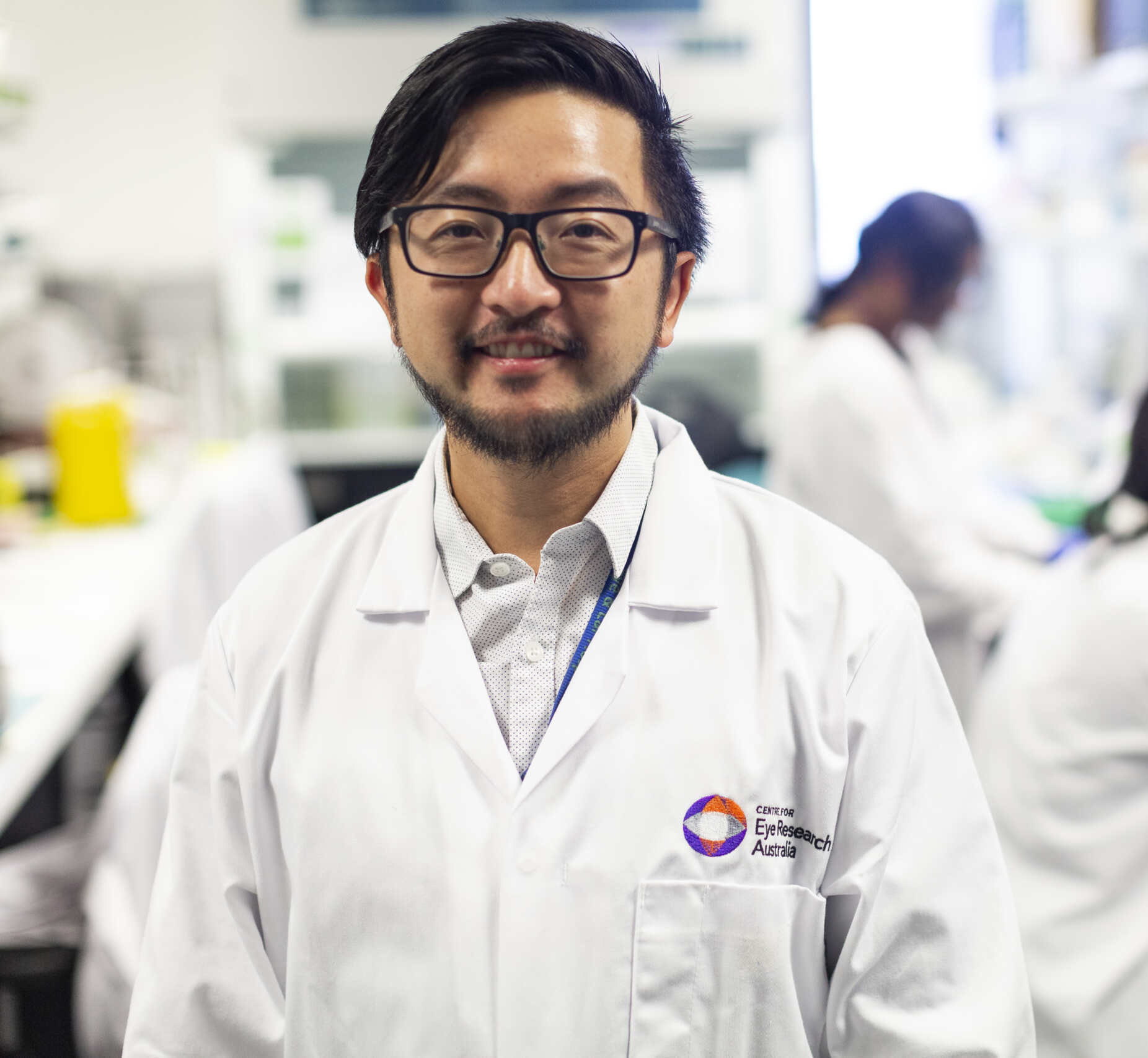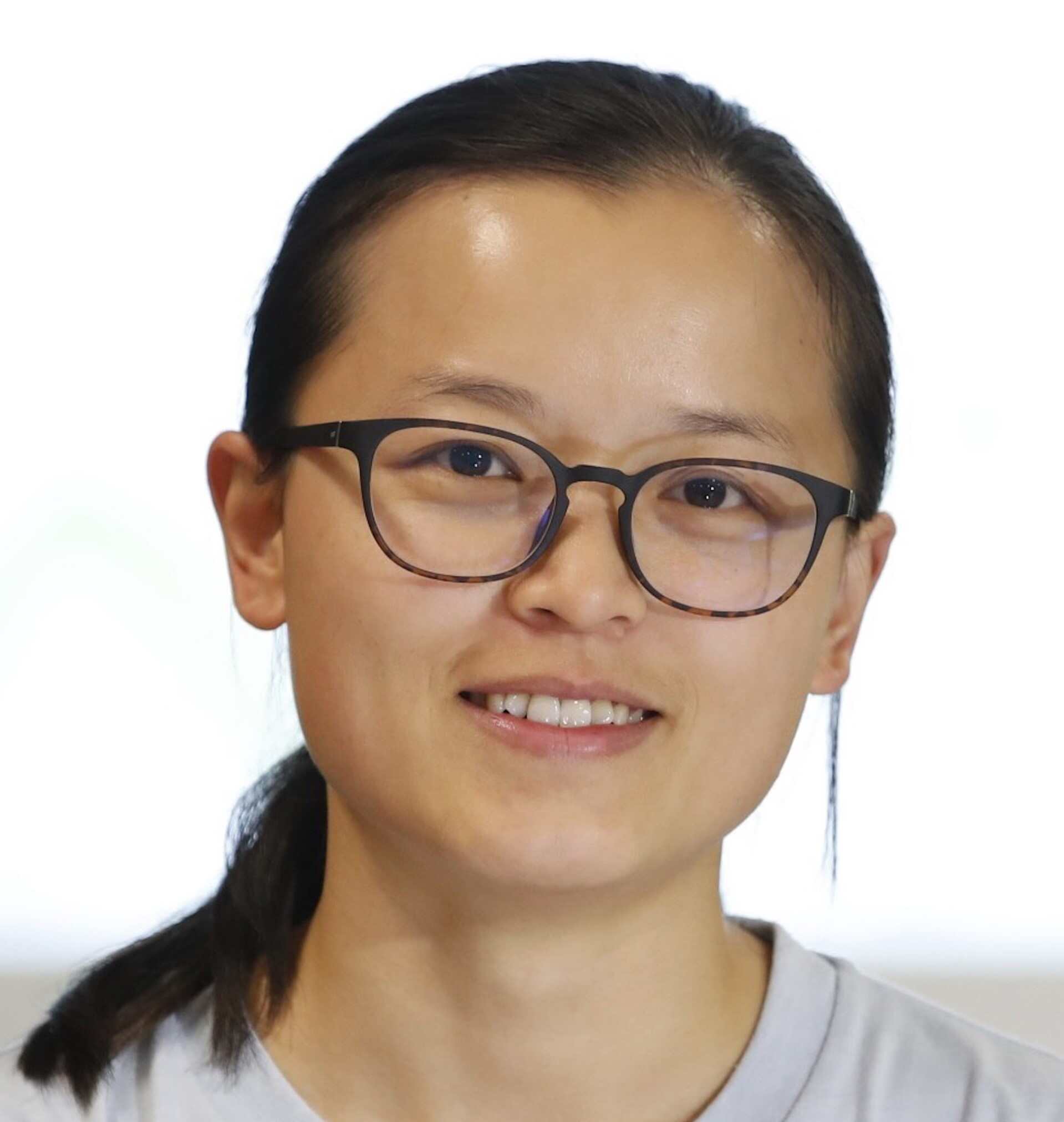Project Aim
This project aimed to evaluate the benefits of our advanced neuromodulation approach in a diseased retina. In particular, we aimed to selectively or preferentially target the “ON” and “OFF” visual pathways using electrical stimulation at three critical stages of retinal degeneration, typically seen in disease progression of Retinitis Pigmentosa:
- Early stage where all rods are lost but most cones remain
- Mid-stage where cones progressively degenerate and
- Late-stage where no rods or cones survive.
Project Results and Impact
Our vision is interpreted by a more than a dozen functionally-distinct retinal visual pathways. Each visual pathway detects unique features from visual inputs, and only transmits specific information to the brain through distinct and precise patterns of spiking activity. Although these channels can be selectively stimulated under natural vision, it is extremely challenging to discriminate them under artificial electrical stimulation due to the differential mechanism of neural excitation under natural and electrical stimulation. This in turn sends conflicting information to the brain leading to poor artificial vision.
Our team pioneered the use of novel stimulation paradigms to achieve differential activation of visual pathways in the retina. We demonstrated that functionally-different retinal pathways, those that form part of the ON pathway (signals increase with increasing light intensity) and those forming part of the OFF pathway (signals decrease with increasing light intensity), can be selectively activated by appropriately varying different stimulus parameters.
Building on and generalising beyond these initial studies, this Retina Australia project extended our research by answering two questions:
1. How well can selectivity be achieved for more specific pathways?
As a first step in answering these questions, we conducted in vitro investigation. Retinal pathways were further classified into transient (ON-Transient and OFF-Transient) and sustained (ON-Sustained and OFF-Sustained) pathways. Sustained pathways are reported to detect form, size and shape, and transient pathways detect the motion or location in human vision. The ability of controlling these pathways using electrical stimulation is critical to generate artificial vision. We found three tested visual pathways (ON-Transient, OFF-Transient and OFF-Sustained) demonstrate their characteristic stimulus-frequency-dependency, and can be preferentially controlled in their specific stimulus parameter space. indicating the identifiability of more specific pathways from the electrically-modulated retina.
2. To what degree does the remodeled neural network mediate the performance of electrical stimulation?
As the second part of this study, we conducted in vitro experiments in different stages of animal models of retinal degeneration coupled with detailed immunohistochemistry techniques to analyse correlations between the effectiveness of electrical stimulation, and key functional/anatomical retinal changes. While this study is still on-going, our preliminary results suggest the possibility of differential activation in degenerated retina, but with a re-optimised stimulation parameter space. We are currently extending these results across multiple stages of degeneration and across a broader range of stimulation amplitudes and frequencies.
All results from this grant will be useful in studying the patterns of electrical pulses from artificial stimulation on the retina and speedup the design and development of next-generation retinal implants, and in doing so, significantly improve the quality-of-life for bionic eye recipients.
Published peer reviewed journal articles
- “Towards Controlling Functionally-Distinct Retinal Ganglion Cells In Degenerate Retina”, by Madhuvanthi Muralidharan, Guo, Tianruo; Shivdasani, Mohit; Tsai, David; Fried, Shelley; Morven Cameron, John W. Morley, Socrates Dokos and Nigel H. Lovell, submitted to 2020 Annual International Conference of the IEEE, Engineering in Medicine and Biology Society (EMBS)
- “Neural activity of functionally different retinal ganglion cells can be robustly modulated by high-rate electrical pulse trains” by Madhuvanthi Muralidharan, Guo, Tianruo; Shivdasani, Mohit; Tsai, David; Fried, Shelley; Li, Liming; Dokos, Socrates; Morley, John; Lovell, Nigel. submitted to Journal of Neural Engineering, Special Issue on The Eye and the Chip
- “Creation of Virtual Channels in the Retina using Synchronous and Asynchronous Stimulation – A Modelling Study” by Song, Xiaoyu; Guo, Tianruo; Shivdasani, Mohit; Dokos, Socrates; Lovell, Nigel; Li, Xinxin; Qiu, Shirong; Li, Tong; Zheng, Shiwei; Li, Liming. submitted to Journal of Neural Engineering, Special Issue on The Eye and the Chip
- “Replicating a more physiological retinal neural code using high-rate electrical stimulation”, Eye and The Chip world research congress, November 2019, Detroit, US.
- “Australian Bionic Vision Story – From benchtop to clinical trials and beyond”, Feinstein Institute for Medical Research, November 2019, NY, US.
- “Selective Activation of Retinal Ganglion Cells, “ An invited session “Computational Models of Neuromodulation” under the theme “Computational Systems & Synthetic Biology; Multiscale Modeling” has been organised at the 2019 International IEEE Engineering in Medicine and Biology Conference (EMBC19) in Berlin, July 2019

Chief investigator:
Scientia Professor Nigel Lovell
University of New South Wales, Sydney
Grant awarded:
$39,900 (2019)
Research Impact Reports
Selective Activation of Retinal Bipolar Cells Using Freeform Electrical Stimulation
Project Aim This project explores a new method called freeform...
Development of epigenetic reprogramming technology to treat retinal degeneration
Project Aim This project aims to create a new way...
Characterizing Stargardt Disease Mutations for Splice Intervention Therapeutics
Project Aim The aim of this project was to find...
Virtual Reality Assessment of Functional Vision in achromatopsia
Project Aim This project aimed to develop and validate a virtual reality (VR) mobility task...




